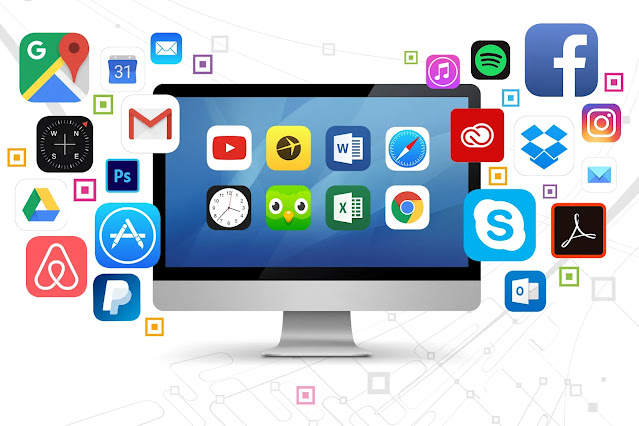What is the basic software of a computer?
 |
| Image Source - Google | Image by - Coderus |
Introduction
When It Comes To Using A Computer, There Are Many Different Types Of Software That Are Essential To Its Operation. In This Blog Post, We Will Discuss The Basic Software Of A Computer, Including The Operating System, Device Drivers, Utilities, And Application Software.
First, Let's Define What We Mean By Basic Software. Basic Software Refers To The Programs That Are Required For A Computer To Function Properly, Including Those That Control The Hardware And Those That Allow Users To Interact With The Computer.
Understanding Basic Software Is Important For Computer Users Because It Allows Them To Troubleshoot Problems, Optimize System Performance, And Make Informed Decisions About Which Software To Install On Their Computer. With That In Mind, Let's Dive Into The Different Types Of Basic Software That Are Essential To A Computer's Operation.
Operating System (Os)
An Operating System (Os) Is A Type Of Software That Manages The Hardware Resources Of A Computer And Provides A User Interface For Users To Interact With The Computer. Without An Operating System, A Computer Would Not Be Able To Function At All.
There Are Several Popular Operating Systems In Use Today, Including Microsoft Windows, Macos, And Linux. Windows Is The Most Widely Used Operating System For Personal Computers, While Macos Is Used Exclusively On Apple Computers. Linux Is A Popular Open-source Operating System That Is Used On A Wide Range Of Devices, Including Servers And Smartphones.
The Functions Of An Operating System Are Varied, But Some Of The Most Important Include:
- Managing Hardware Resources: The Operating System Allocates Resources Such As Memory, Cpu Time, And Storage Space To Different Applications And Processes Running On The Computer.
- Providing A User Interface: The Operating System Provides A Graphical User Interface (Gui) That Allows Users To Interact With The Computer And Run Applications.
- Running Applications: The Operating System Is Responsible For Starting And Stopping Applications, Managing Their Resources, And Providing A Secure Environment For Them To Run In.
Device Drivers
- Graphics Card Driver: This Driver Enables The Graphics Card To Display Images On The Computer Screen.
- Printer Driver: This Driver Allows The Computer To Send Print Jobs To The Printer And Control Its Various Features.
- Network Adapter Driver: This Driver Allows The Computer To Connect To A Network And Communicate With Other Devices.
- Allowing Hardware To Communicate With The Operating System: Without Device Drivers, The Operating System Would Not Be Able To Communicate With Hardware Devices, And They Would Not Be Usable.
- Providing Additional Features Or Performance Enhancements: Device Drivers Can Also Provide Additional Functionality Or Performance Enhancements For Hardware Devices, Such As Better Graphics Performance Or Improved Network Speeds.
Utilities
- Disk Cleanup: This Utility Helps To Free Up Space On The Hard Drive By Removing Unnecessary Files And Temporary Data.
- Defragmentation: This Utility Reorganizes The Data On The Hard Drive To Improve Performance And Speed Up Access Times.
- Antivirus Software: This Utility Protects The Computer From Viruses, Malware, And Other Security Threats By Scanning Files And Programs For Malicious Code.
- Maintaining System Performance: Utilities Can Help To Optimize System Performance By Removing Unnecessary Files, Cleaning Up The Registry, And Managing System Settings.
- Protecting Against Security Threats: Utilities Such As Antivirus Software Can Help To Protect The Computer From Viruses, Malware, And Other Security Threats By Scanning Files And Programs For Malicious Code.
- Organizing And Managing Data: Utilities Can Help To Organize And Manage Data On A Computer By Providing Tools For Backing Up Files, Managing Partitions, And Recovering Lost Data.
Application Software
- Web Browsers: These Applications Allow Users To Browse The Internet And View Websites.
- Productivity Software: This Type Of Software Includes Applications Such As Word Processors, Spreadsheets, And Presentation Software That Are Used To Create And Manage Documents, Spreadsheets, And Presentations.
- Multimedia Software: This Software Includes Applications Such As Photo Editors, Video Editors, And Music Players That Are Used To Create, Edit, And Play Multimedia Files.
- Performing Specific Tasks Or Functions: Application Software Is Designed To Perform Specific Tasks Or Functions, Such As Creating A Document, Editing A Photo, Or Playing A Video.
- Allowing Users To Create Or Manipulate Data: Application Software Allows Users To Create, Edit, And Manipulate Data In Various Formats, Such As Text, Graphics, Audio, And Video.
